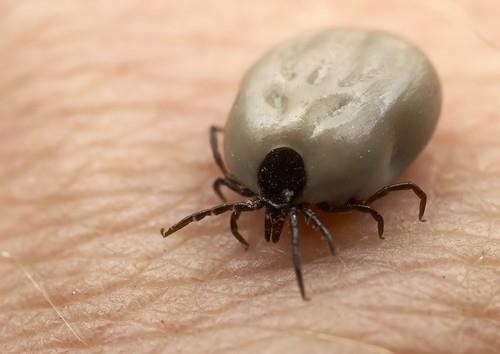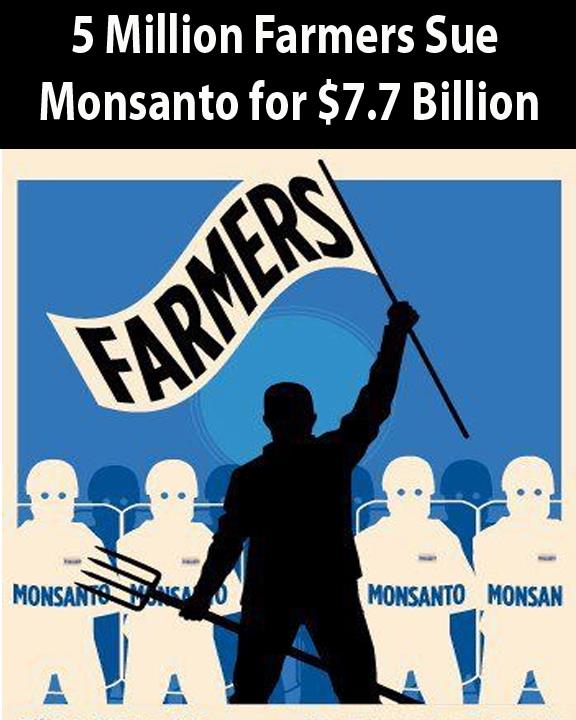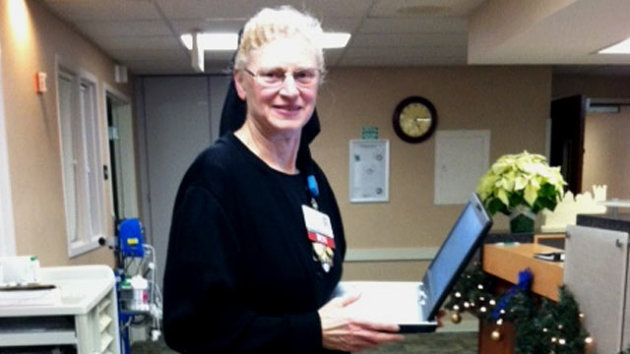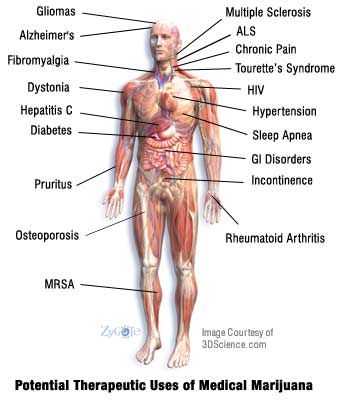|
Di seguito tutti gli interventi pubblicati sul sito, in ordine cronologico.
Che il "pensare positivo" sia di aiuto a sentirsi meglio lo capiscono già i bambini della scuola materna, e questo può non stupire. Ciò che è meno ovvio è che a dettare la capacità del bambino di assumere un atteggiamento positivo anche nelle situazioni difficili sia, più che la sua indole, l'atteggiamento verso la vita e la capacità di pensare positivo dei suoi genitori.
Ad appurarlo è stato uno studio condotto da ricercatori della Jacksonville University e dell'Università della California a Davis, che lo illustrano in un articolo pubblicato su "Child Development".
Nello studio, i ricercatori hanno esaminato 90 bambini di età compresa fra i 5 e i 10 anni. I bambini ascoltavano sei storie in cui due personaggi provavano un'emozione dopo aver sperimentato qualcosa di positivo (ricevere in regalo un cucciolo), negativo (rovesciare il bricco del latte), o ambiguo (l'arrivo di un nuovo insegnante). Dopo ciascuna esperienza, un personaggio aveva un pensiero ottimista, inquadrando l'evento in una luce positiva, mentre l'altro aveva un pensiero pessimista, mettendo l'evento in una luce negativa. I ricercatori a questo punto chiedevano ai bambini di giudicare le emozioni di ogni personaggio e di fornire una spiegazione per quelle emozioni. In colloqui precedenti, i ricercatori avevano accuratamente valutato il livello di ottimismo e speranza di ogni bambino e dei suoi genitori.

Già dai 5 anni i bambini capiscono che le persone si sentono meglio dopo aver avuto pensieri positivi che non dopo aver avuto pensieri negativi, e dimostrano pure di comprendere l'importanza di avere pensieri positivi in situazioni ambigue, una comprensione quest'ultima che diventa più profonda con l'aumentare dell'età.
I bambini mostrano invece una maggiore difficoltà a comprendere come il pensiero positivo possa risollevare l'animo di qualcuno che sia coinvolto in situazioni negative, come per esempio cadere e farsi male. In queste situazioni, il livello di ottimismo e di speranza del bambino ha un ruolo significativo nella capacità di comprendere il potere del pensiero positivo, ma decisamente più grande lo ha l'atteggiamento dei genitori.
"Oltre all'età, il più forte predittore della comprensione da parte dei bambini dei benefici del pensiero positivo, non è il livello di speranza e di ottimismo del bambino stesso, ma quello dei suoi genitori", spiega Christi Bamford, che ha condotto lo studio.
I risultati, osserva la Bamford, sottolineano il ruolo dei genitori nell'aiutare i bambini a imparare a sfruttare il pensiero positivo per sentirsi meglio quando le cose si fanno difficili.
Fonte: lescienze.it
Troubled by wrinkles around your eyes? Worried that your skin is sagging, or those gray hairs are making you look your age?
So have sex.
Making love three times a week can make you look 10 years younger, claims a Scottish researcher.
"It's good for you to have good sex," says David Weeks, a clinical neuropsychologist at the Royal Edinburgh Hospital, whose study on the effects of sex on aging appears in his book, Secrets of the Superyoung.
Over the last 10 years, Weeks and his colleagues interviewed 3,500 European and American men and women on a variety of lifestyle topics. Participants ranged in age from 20 to 104, but most were 45 to 55 years old.
The thing they had in common: They looked young for their age. That's what a six-judge panel decided after watching the interviewees through a one-way mirror. The volunteer judges guessed the participants' ages from seven to 12 years younger than their actual ages, Weeks says.

Interview topics ranged from how they deal with stress within relationships, how they get along with their parents and high and low points of their lives, to prior sexual experiences, how often they had sex and whether they enjoyed it.
A vigorous sex life, Weeks says, was the second-most important determinant of how young a person looked. Only physical activity proved more important than sex in keeping aging at bay, he says.
Other major influences on keeping a person young-looking included socializing with people of all ages, being married to or in a relationship with someone younger and, for women, taking hormone replacement therapy during menopause, Weeks says.
So, how often should you do it?
The young-looking participants had sex an average of three times a week, Weeks says. By comparison, a group of men and women in the same age bracket and from similar neighborhoods reported having sex an average of twice a week, he says.
More frequent sex -- more than three times a week -- didn't seem to produce any added benefits, Weeks says.
Casual sex doesn't count
And casual sex with different partners, or cheating, did not slow the aging process, the researchers say. In fact, Weeks says, it may cause premature aging from worry and stress.
"The sex doesn't work without a good relationship," Weeks says. "It works via a relationship that is very supportive and emphatic, in which both people are physically and emotionally compatible."
Others agree that sex can be good for your health.
"It's extremely important to your health," says Dr. Barbara Bartlik, a clinical professor of psychiatry at Weill Medical College of Cornell University in New York City. "It promotes marital harmony. The stresses and strains become more manageable when a couple is having sex regularly."
And Carol Ellison, a California psychologist and author of Generations of Women Share: Intimate Secrets of Sexual Self-Acceptance, says previous research has shown other physiological benefits to sex as well.
Sex can burn fat and cause the brain to release endorphins, naturally occurring chemicals that act as painkillers and reduce anxiety, she says. In men, sex seems to stimulate the release of growth hormones and testosterone, which strengthens bones and muscles. In both men and women, research has shown, sex also seems to prompt the release of substances that bolster the immune system.
And people who have lots of sex, Ellison says, tend to eat better and exercise more.
But three times a week may not be optimal for everyone, she says. People who are healthier and feel younger, for instance, may want more frequent sex.
Plus, she adds, sex means different things to different people.
To Weeks, sex and orgasms are one and the same. In his study, the researchers assumed that people who said they had sex three times a week also had orgasms three times a week.
"Sex is the most pleasurable activity people take part in, and because the orgasm is the most pleasurable of that, it's hard to separate it out," Weeks says. "It's hard to say if it accounts for 50 percent or 75 percent" of the beneficial effects.
Does sex = orgasm?
But Ellison believes good sex can take many forms.
"We're caught up in this idea that sex equals orgasm," Ellison says. "You don't have to put on a performance when you have sex. You don't even have to have intercourse."
Preoccupation with orgasm, especially among women, can make them feel like a failure in bed when it doesn't happen, she says.
"The key is not, 'How am I doing? Am I getting turned on fast enough? Is this going to happen?' " she says. "The key is, 'Am I enjoying what is happening at this moment?' "
How often those moments occur seems to depend on where in the world you live.
Americans had the most sex in 1999, according to a recent survey of 18,000 men and women between 16 and 25 years of age conducted by SSL International, the British manufacturer of Durex condoms.
The worldwide average was 96 times a year, but Americans claimed to have had sex 132 times a year, followed by the Russians (122), French (121) and Greeks (115). Young Japanese made love the least often (32 times a year), the survey says.
Americans also seem to be getting a head start on people from other countries, reporting the earliest average age at which they started having sex. Americans lost their virginity at an average age of 16.4 years, followed by Brazilians at age 16.5 and the French at 16.8, the survey says.
The French had the most sexual partners, claiming an average of 16.7 each. Greeks were second with 15 partners each, followed by Brazilians with 12.5 and Americans with 11.8. Residents of India were the most faithful to their partners, with 82 percent saying they had sex with just one person.
But Bartlik says it's best to take the survey with a grain of salt. Researching sexual behavior is difficult, she says, because it's hard to get truthful answers. Some people inflate their answers on purpose, and for many questions it's difficult to give precise responses unless you've kept a weekly chart of sexual activity, she says.
"Perception is everything," Bartlik says. "Just look at the Woody Allen movie [Annie Hall]. He says, 'We never have sex.' She says, 'We're having sex all the time.' "
For information on other recent studies on sexuality, check out the Web site of the Kinsey Institute.
Source: preventdisease.com
La luce è in grado d'influenzare direttamente le capacità di apprendimento e di disturbare l'umore agendo su specifiche cellule della retina, le cellule gangliari. Lo hanno dimostrato Tara A. LeGates del Dipartimento di Biologia della Johns Hopkins University a Baltimore, nel Maryland, e colleghi di un'ampia collaborazione internazionale, che firmano in proposito un articolo sulla rivista "Nature".
E' un fatto acquisito che le variazioni di luce possono alterare negativamente l'umore e sulle funzioni cognitive: per esempio, l'esigua durata del giorno durante l'inverno, particolarmente evidente nei paesi del Nord, può portare a sindromi depressivi. Si è verificato sperimentalmente, inoltre, che studiare in condizioni di luce diurna è più proficuo che studiare di notte alla luce di una lampada.

Tuttavia, finora non si conoscevano i circuiti neuronali attraverso i quali si esplica questa influenza delle condizioni di luce, né era chiara la funzione di tali circuiti. L'ipotesi prevalente era che le variazioni dell'esposizione al sole alterassero i ritmi circadiani (i processi che controllano il nostro “orologio biologico” con ciclo di 24 ore). Un altro fattore indiretto sulla funzionalità del cervello, finora ritenuto cruciale, era la deprivazione del sonno.
Per verificare queste ipotesi, LeGates e colleghi hanno sottoposto alcuni topi di laboratorio a un ciclo di luce/buio aberrante definito ultradiano (3,5 ore di luce seguite da 3,5 di oscurità, quindi evitando di far prevalere l'esposizione alla luce o viceversa all'oscurità) verificando che non avesse effetti né sul ritmo del sonno né sui ritmi circadiani. L'isolamento dei diversi fattori implicati ha consentito di dimostrare che la luce regola direttamente i comportamenti collegati all'umore e alle funzioni cognitive.
Gli animali hanno mostrato infatti un incremento dei comportamenti di tipo depressivo e chiari deficit di apprendimento. In particolare, i risultati della sperimentazione dimostrano che i problemi di umore precedono quelli di apprendimento, dal momento che la somministrazione dei farmaci antidepressivi fluoxetina e o desipramina ha consentito di ristabilire i corretti ritmi di apprendimento e di sonno nei topi esposti al ciclo di luce/buio aberrante.
Con un secondo test, i ricercatori hanno individuato anche la via neuronale che media questa processo: si tratta delle cellule gangliari retinali fotosensibili. I topi mancanti di queste specifiche cellule della retina, infatti, non hanno manifestato alcun deficit di apprendimento né alterazioni nell'umore.
Fonte: lescienze.it
Negocierile, esec total: “orice împrumut nou este exclus!”
Guvernul pastreaza o tacere mormântala despre vizita FMI de saptamâna trecuta. De ce? Simplu, pentru ca au dat-o-n bara. Discutiile au fost foarte dure, iar premierul Victor Ponta efectiv a fost palmuit.

La negocieri, Ponta a cerut doua lucruri:
- Înca 10 miliarde de euro, de urgenta (in contul celebrei “centuri de siguranta”).
- Daca nu, macar un nou acord formal cu FMI, pentru ca România sa se poata împrumuta in continuare de la banci.
Raspunsul FMI:
- N-ati respectat nimic din ce ati semnat pana acum.
- Companiile de stat falimentare NU au fost închise, ba chiar dau salarii mai mari ca privatii.
- Numarul bugetarilor NU a fost redus. N-ati dat pe nimeni afara! Ati crezut ca ne pacaliti reducând posturile neocupate si pensionând câtiva fraieri.
- Evaziunea fiscala NU a fost redusa, din contra, a explodat.
- Deci orice nou împrumut este exclus.
- Deci orice nou acord este exclus.
Adica... muie.

Ponta s-a speriat!
Marele socialist Victor Ponta stie si el ca fara FMI e mort. La propriu: adica nu mai sunt bani de pensii si salarii si îl linseaza oamenii. Si culmea, exact aia care l-au votat: pensionarii, bugetarii, asistatii social. Adica cersetorii.
Asa ca a cerut FMI-ului un ragaz: va rog sa nu anuntati ruperea relatiilor, înca! Dati-ne doua luni de proba si va promit ca o sa facem ce nu s-a facut in 20 de ani.
Delegatia FMI a izbucnit in ras: nu zau?! Hai sa va vedem!
Ce face acum guvernul?
In clipa asta, Ponta e disperat.
- Evaziunea fiscala, stie ca n-are nici o sansa s-o reduca.
- Reforma n-are de gând sa faca. Pentru ca reforma înseamna de fapt distrugerea statului social, pe care l-au muls toate partidele timp de 20 de ani. Fara stat pe care sa-l fure, adio contracte cu Hidroelectrica, adio verisoare angajate in ministere, adio deplasari in strainatate, adio tot! Daca se privatizeaza statul, clasa politica moare in doua saptamâni.
- Singurul lucru pe care o sa-l faca, este sa mareasca taxele, in speranta ca vor creste veniturile statului. Dar stie si el ca economia româneasca e ca o vaca costeliva si bolnava: ce sa mai mulgi la ea?
De ce a cerut atunci doua luni? Pentru ca spera ca in astea doua luni sa gaseasca praf de aruncat in ochii FMI. Adica sa le dea iar vorbe goale in loc de fapte, si sa primeasca in schimb bani (exact cum a facut si Boc). Iar daca n-o sa reuseasca sa-i pacaleasca, in astea doua luni macar sa se împrumute cat mai poate de la bancile private.
- De aceea l-a trimis de urgenta pe Daniel Chitoiu, ministrul Economiei, sa declare ca 120.000 de bugetari vor fi concediati.
- De aceea l-a trimis si pe Constantin Nita, ministrul Energiei, sa declare ca companiile de stat falimentare (minerit, CFR, TAROM, Oltchim etc.) vor fi in fine închise.
Evident, nu vrea sa faca nici una, nici alta: pai in companiile alea freaca menta 600.000 de cersetori! Plus 120.000 de bugetari!
Pentru Victor Ponta, nu se mai pune problema sa-si termine mandatul: ci sa scape cu viata.
De câti bani are nevoie Ponta?
10 miliarde la pensii + 8 miliarde salarii bugetari + 16 miliarde ajutoare sociale si alte pomeni. In total 34 de miliarde de euro (nu lei!). Sursa: bugetul pe 2013.
Plus spagile pentru activistii USL, ca altfel îl debarca ca pe Razvan Ungureanu (pai ei de ce s-au zbatut sa câstige alegerile?). Asta e mai greu de estimat, dar in buget am vazut ca Guvernul si-a rezervat cam 14 miliarde de euro pentru contracte de stat, din care va fura minim 50%.
Deci, USL-istii se asteapta sa manânce si gura lor, macar 7 miliarde de euro. Pai e nasol, bai Ponta! N-ai nici o sansa!
“You can’t talk your way out of this!”
Ce înseamna asta? E o expresia americana. In traducere aproximativa: nu poti sa ne duci cu vorba. Ce legatura are cu acest articol despre FMI?
Hehehe... las’ ca stie Ponta legatura...
Ce se va întâmpla de fapt?
Stim cu totii:
FMI nu va mai da nici un ban României.
Bani de la banci, s-ar putea sa mai gaseasca in astea doua luni. Dar sunt ultimii! Si la ce foame are statul român, n-o sa-i ajunga pana la sfârsitul anului 2013.
In concluzie: comunistilor, ati intrat in anul mortii!
Sursa: capitalismpepaine.wordpress.com - Autor: Mihai Giurgea
Mohandas Karamchard Gandhi, detto il Mahatma (in sanscrito significa Grande Anima, soprannome datogli dal poeta indiano R. Tagore), è il fondatore della nonviolenza e il padre dell'indipendenza indiana.

Il nome Gandhi in lingua indiana significa 'droghiere': la sua famiglia dovette esercitare per un breve periodo un piccolo commercio di spezie.
Nato il 2 ottobre 1869 a Portbandar in India, dopo aver studiato nelle università di Ahmrdabad e Londra ed essersi laureato in giurisprudenza, esercita brevemente l'avvocatura a Bombay.

Di origini benestanti, nelle ultime generazioni la sua famiglia ricoprì alcune cariche importanti nelle corti del Kathiawar, tanto che il padre Mohandas Kaba Gandhi era stato primo ministro del principe Rajkot. I Gandhi tradizionalmente erano di religione Vaishnava; appartenevano cioè ad una setta Hindù con particolare devozione per Vishnù.
Nel 1893 si reca in Sud Africa con l'incarico di consulente legale per una ditta indiana: vi rimarrà per ventuno anni. Qui si scontra con una realtà terribile, in cui migliaia di immigrati indiani sono vittime della segregazione razziale. L'indignazione per le discriminazioni razziali subite dai suoi connazionali (e da lui stesso) da parte delle autorità britanniche, lo spingono alla lotta politica.
Il Mahatma si batte per il riconoscimento dei diritti dei suoi compatrioti e dal 1906 lancia, a livello di massa, il suo metodo di lotta basato sulla resistenza nonviolenta, denominato anche Satyagraha: una forma di non-collaborazione radicale con il governo britannico, concepita come mezzo di pressione di massa.
Gandhi giunge all'uguaglianza sociale e politica tramite le ribellioni pacifiche e le marce.
Alla fine il governo sudafricano attua importanti riforme a favore dei lavoratori indiani: eliminazione di parte delle vecchie leggi discriminatorie, riconoscimento ai nuovi immigrati della parità dei diritti e validità dei matrimoni religiosi.
Nel 1915 Gandhi torna in India dove circolano già da tempo fermenti di ribellione contro l'arroganza del dominio britannico, in particolare per la nuova legislazione agraria, che prevedeva il sequestro delle terre ai contadini in caso di scarso o mancato raccolto, e per la crisi dell'artigianato.
Diventa il leader del Partito del Congresso, partito che si batte per la liberazione dal colonialismo britannico.
Nel 1919 prende il via la prima grande campagna satyagraha di disobbedienza civile, che prevede il boicottaggio delle merci inglesi e il non-pagamento delle imposte. Il Mahatma subisce un processo ed è arrestato. Viene tenuto in carcere pochi mesi, ma una volta uscito riprende la sua battaglia con altri satyagraha. Nuovamente incarcerato e poi rilasciato, Gandhi partecipa alla Conferenza di Londra sul problema indiano, chiedendo l'indipendenza del suo paese.

Del 1930 è la terza campagna di resistenza. Organizza la marcia del sale: disobbedienza contro la tassa sul sale, la più iniqua perché colpiva soprattutto le classi povere. La campagna si allarga con il boicottaggio dei tessuti provenienti dall'estero. Gli inglesi arrestano Gandhi, sua moglie e altre 50.000 persone. Spesso incarcerato anche negli anni successivi, la "Grande Anima" risponde agli arresti con lunghissimi scioperi della fame (importante è quello che egli intraprende per richiamare l'attenzione sul problema della condizione degli intoccabili, la casta più bassa della società indiana).
All'inizio della Seconda Guerra Mondiale Gandhi decide di non sostenere l'Inghilterra se questa non garantirà all'India l'indipendenza. Il governo britannico reagisce con l'arresto di oltre 60.000 oppositori e dello stesso Mahatma, che è rilasciato dopo due anni.
Il 15 agosto 1947 l'India conquista l'indipendenza. Gandhi vive questo momento con dolore, pregando e digiunando. Il subcontinente indiano è diviso in due stati, India e Pakistan, la cui creazione sancisce la separazione fra indù e musulmani e culmina in una violenta guerra civile che costa, alla fine del 1947, quasi un milione di morti e sei milioni di profughi.
L'atteggiamento moderato di Gandhi sul problema della divisione del paese suscita l'odio di un fanatico indù che lo uccide il 30 gennaio 1948, durante un incontro di preghiera.
Fonte: biografieonline.it via cronachelodigiane.net

Tick Removal: A nurse discovered a safe, easy way to remove ticks where they automatically withdraw themselves when you follow her simple instructions. "I had a pediatrician tell me what she believes is the best way to remove a tick. "

Apply a glob of liquid soap to a cotton ball. Cover the tickwith the soap-soaked cotton ball and swab it for a few seconds (15-20); the tick will come out on its own and be stuck to the cotton ball when you lift it away. Please pass on.
Here we glimpse some of the potentials for the unabated and bizarre proliferation of GMOs. Some of these developments you will already know about (hopefully), but some will come as a surprise. As I see it we are now at a crossroads where we can still dismantle this dangerous and perverted manipulation of the very fabric of life, the sacred code of nature, which will undoubtedly affect each and every one of us in profound ways now and in the future.

Here we are reminded that the fight against GMOs and to save organics is not just a battle for what we knew yesterday, which is bad enough. It is a fight against the future of the GE movement and the unlikely and increasingly creepy, scary, and deranged turns it will likely take. Just today I read elsewhere that 35 species of fish, in addition to salmon, are slotted to be genetically engineered for various traits. I am not going to preview the highlights of what is below, but maybe you too will be left wondering, “What will they think of next?”
I hope we never have to find out. We have to stop this now before we and future generations have to be genetically engineered, RoundUp and 2,4-D Ready at the least perhaps, to withstand the onslaught of the weird stuff being channelled into our food supply and into our environment. If you haven’t already, perhaps after reading this article you will be more ready to take a real stand against GMOs by enacting the 11 Simple Steps to Eradicate GMOs and join our GMO Eradication Movement. Now put down that bowl of GMO corn chowder, buckle your seatbelts, clear you ears and clean off your eyeglasses for the list of 20 GMOs coming soon and already arrived to supermarket shelves near you.
Good luck distinguishing these Frankenfoods from real, natural food as they flood our supermarkets.
Genetically altered to withstand heavy applications of toxic chemicals, resist disease or contain more nutrients, so-called “Frankenfoods” are appearing on supermarket shelves at a rapid rate. Currently, genetically modified (GM) corn and soy can be found in many processed foods, and the produce section may contain GM zucchini, corn on the cob and papaya. But beyond those that have already been approved for human consumption, many more GMOs are on the way – and they probably won’t be labeled. These 20 crops and animal products include both those that are already available (whether we like it or not) and some that are still in development, like cows that produce human breast milk.
Corn
If you eat any kind of processed food on a regular basis – tortilla chips, cereal, granola bars – chances are, you consume genetically modified corn. The Center for Food Safety estimates that over 70% of the processed foods in American grocery stores contain genetically modified corn or soy. Corn is altered to contain proteins that kill insects that eat them, so they effectively produce their own pesticides.
Rice
Rice plants are often modified to be resistant to herbicides and pests, to increase grain size and to generate nutrients that don’t exist in the grain naturally. Varieties include Bayer’s herbicide-resistant “LibertyLink” rice, vitamin A-infused “golden rice” and the bizarre Ventria Bioscience “Express Tec” rice, which has been altered to contain human proteins naturally found in breast milk. The latter is used globally in infant formula.
Tomatoes
Among the first foods to be genetically altered, GM tomatoes have been developed to be unnaturally high in anti-oxidants, to have more intense flavor and to stay fresh longer. While there are not currently any genetically modified tomatoes on store shelves, they’re being used extensively by scientists to study the function of genes that are naturally present in the plants.
Soybeans
The most common genetically engineered food of all is the soybean. Since 1996, scientists have been creating varieties of soybeans that are resistant to both pests and herbicides, and they wind up in places you’d least expect them, like candy bars. A new GM soybean with higher levels of healthy oils was approved by the USDA in 2010; chemical companies DuPont and Monsanto are both working on their own versions of the biotech bean.

Cotton
We don’t think of cotton as a food, and technically it isn’t – but we still end up eating it. Cotton isn’t classified as a food crop, so farmers can use any chemicals they want when growing it. That means cottonseed oil, which is present in products like mayonnaise and salad dressing, can be packed full of pesticides. Along with soy, corn and canola, cotton grown for oil extraction is one of the most frequently genetically modified crops in the world.
Canola Oil
Canola, a cultivar of rapeseed, produces one of the most commonly consumed food oils, and it’s one of America’s biggest cash crops. What you may not know is that canola stands for “Canadian oil, low acid,” referring to a variety of rapeseed developed in the 1970s. 80% of the acres of canola sown in the U.S. are genetically modified, and a 2010 study in North Dakota found that the modified genes of these plants have spread to 80% of wild natural rapeseed plants.
Sugar Beets
Despite the fact that an environmental impact study has yet to be completed, the USDA has announced that farmers may now plant Monsanto’s Roundup Ready sugar beets, which have been altered to withstand the company’s herbicide. This decision comes despite a 2010 court order that prohibited planting the GMO beets until the study was performed. Sugar beets provide about half of America’s sugar.
Salmon
Salmon may become the first genetically modified animal to be approved for direct human consumption. The FDA has decided that a variety of GM salmon that grow twice as fast as their natural, un-modified peers is both safe to eat and safe for the environment.
“We’re looking here at a scenario where the fish might wind up sooner or later in the ocean,” Brian Ellis, plant biotechnologist at the University of British Columbia Vancouver, told Discovery News. “I think if we go down this route, we have to be prepared to accept some potentially unknown consequences.”
Sugar Cane
Providing the other half of America’s precious sugar, sugar cane is set to debut on our shelves in genetically modified form sometime soon. Brazil’s state-owned agricultural research agency has been hard at work developing drought-resistant sugar cane that also bears increased yields for years now, and may have it certified for commercial use within five years. Australia is also working on its own version.
Papaya
After the Ringspot Virus nearly destroyed all of Hawaii’s papaya crops, a new variety was engineered to resist the disease, and it now represents the majority of the papayas grown in the United States.
“Papaya would be unique in the sense where the industry in Hawaii is dependent on biotech,” says Kevin Richards, director of regulatory relations for the American Farm Bureau. “What you have in Hawaii is a very contained, isolated agro-eco system, which is vulnerable to diseases.”

Potatoes
The first genetically modified food to be approved for cultivation in Europe in over a decade, Amflora potatoes are currently being grown in Sweden. High in starch content, the potatoes are actually meant for use in paper, glues and other commercial products rather than as food, but that doesn’t mean they won’t end up affecting the food chain. Nearby farmers worry about their rabbits, deer, and especially their bees.
Honey
Could genetically modified crops have something to do with the mysterious ailments that are killing honeybee colonies by the billions? Some researchers believe so. A zoologist in Germany found that genes used to modify rapeseed crops had transferred to bacteria living inside bees. GMOs are currently considered to be among the possible causes of Colony Collapse Disorder. And if the genes are causing changes within the bees, they’re also likely to cause changes to the honey that the bees produce.
Bananas
After banana crops in Uganda were affected by a bacterial disease that caused the plants to rot, scientists developed a genetically modified variety that could help alleviate the $500 million annual loss. The ban on GM crops was waived to make way for the GM version of Uganda’s staple food. A gene from sweet pepper was inserted into the bananas that make them resistant to the bacteria. Cultivated bananas have almost no genetic diversity, so supporters of this decision argue that introducing the GMO fruits will actually help bananas as a whole.
Sources: ecosalon.com & wakeup-world.com via worldtruth.tv & secretsofthefed.com
The announcement, from the Church's House of Bishops, would allow gay clergy to become bishops if they promise to be celibate.

Conservative evangelical Anglicans say they will fight the move in the Church's ruling general synod.
The issue has split the church since 2003 amid a row over gay cleric Jeffrey John becoming Bishop of Reading.
Mr John, now Dean of St Albans, was forced to step down from the role after protests from traditionalists.

He was also a candidate for Bishop of Southwark in 2010 but was rejected. Evidence emerged that this was because of his sexual orientation.
The Church of England has already agreed to allow people in civil partnerships to become clergy, provided they promised they would remain celibate, and repent for active homosexuality in the past.
In July last year, the House of Bishops (HoB) said it would review this decision, made in 2005, to decide whether it could also relate to bishops.
In the list of decisions at its latest meeting in December, it has now confirmed that those conditions could now extend to bishops.
This amounts to a lifting of the moratorium on the appointment of clergy in civil partnerships as bishops, the Church Times said.
Fiercely resisted
The Rt Revd Graham James, Bishop of Norwich, said on behalf of the HoB it would be "unjust" to exclude anyone for consideration for the role of bishop who was "seeking to live fully in conformity with the Church's teaching on sexual ethics or other areas of personal life and discipline".
He said: "All candidates for the episcopate undergo a searching examination of personal and family circumstances, given the level of public scrutiny associated with being a bishop in the Church of England.
"But these, along with the candidate's suitability for any particular role for which he is being considered, are for those responsible for the selection process to consider in each case."
BBC religious affairs correspondent Robert Pigott said given the tension surrounding the issue of sexuality, the Church's decision to allow men in civil partnerships to become bishops represented a major concession and one with considerable symbolic significance.
Evangelicals have warned they would be willing to bring in bishops from overseas to avoid serving under a gay bishop.
Rod Thomas, chairman of the evangelical group Reform, said the idea of appointing people in civil partnerships as bishops had not been agreed or debated by the wider Church.
"That would be a major change in church doctrine and therefore not something that can be slipped out in the news, it is something that has got to be considered by the General Synod."
He said there would be great divisions in the church if clergy in a civil partnership were appointed as a bishop.
Worldwide, anger over the appointment of actively gay men and women as bishops, especially in the US, has actuated the conservative Gafcon movement, through which conservative Anglican provinces in Africa and elsewhere have begun to function independently of the official Anglican Communion.
Gafcon has condemned those who preach a "false gospel" which "claims God's blessing for same-sex unions over against the biblical teaching on holy matrimony".
Source bbc.co.uk
The hospital imposed mandatory vaccines, responding to rising concerns about the spread of influenza.
Ethel Hoover wore all black on her last day of work as a nurse in the critical care unit at Indiana University Health Goshen Hospital. She said she was in "mourning" because she would have been at the hospital 22 years in February, and she's only called out of work four or five times in her whole career , she said.
"This is my body. I have a right to refuse the flu vaccine," Hoover, 61, told ABCNews.com. "For 21 years, I have religiously not taken the flu vaccine, and now you're telling me that I believe in it."
More than 15,100 flu cases have been reported to the Centers for Disease Control and Prevention since Sept. 30, including 16 pediatric deaths. Indiana's flu activity level is considered high, according to the CDC, which last month announced that the flu season came a month earlier than usual.

When Hoover first heard about the mandate, she said she didn't realize officials would take it so seriously. She said she filed two medical exemptions, a religious exemption and two appeals, but they were all denied. The Dec. 15 flu shot deadline came and went. Hoover's last day of employment was Dec. 21.
Fellow nurse Kacy Davis said she and her colleagues were "horrified" over Hoover's firing, calling her their "go-to" nurse and a "preceptor."
"It was a good place to work," Hoover said. "We've worked together all these years. We're like a family."

The hospital said in a statement that it implemented the mandate to promote patient safety based on recommendations from the American Medical Association, the American Nurses Association, and the Centers for Disease Control and Prevention. It announced the mandate in September. Of the hospital's 26,000 employees statewide, 95 percent complied. That means 1,300 employees did not comply, but only eight were fired.
"IU Health's top priority is the health and wellbeing of our patients," said hospital spokeswoman Whitney Ertel. "Participation in the annual Influenza Patient Safety Program is a condition of employment with IU Health for the health and safety of the patients that we serve, and is therefore required."
The CDC recommends flu shots for everyone older than six months of age. Dr. William Schaffner, chair of preventive medicine at Vanderbilt University Medical Center in Nashville, Tenn., said hospital patients are especially vulnerable to flu complications because their bodies are already weakened.
"I cannot think of a reason for any health care professional to decline influenza immunization that's valid," said Schaffner, a former president of the National Foundation for Infectious Diseases, adding that people with egg allergies may have to avoid the flu shot to prevent anaphylactic shock, but even that hurdle has been remedied. The Food and Drug Administration approved an egg-free vaccine in November.
Schaffner said invalid excuses to avoid the shot include being afraid of needles and simply promising to stay home when they're sick. Patients now have the option of a vaccine nasal spray if they want to avoid needles. And since flu victims become contagious before they start to feel sick, they can get patients sick even if they stay home when they have symptoms.
Over the last several years, hospitals have been moving toward mandatory vaccinations because many only have 60 percent vaccination rates, Schaffner said. He is leading an effort for a similar mandate at Vanderbilt University Medical Center.
Nurses in particular tend to be the most reluctant to get vaccinated among health care workers, Schaffner said, citing his opinion.
"There seems to be a persistent myth that you can get flu from a flu vaccine among nurses," he said. "They subject themselves to more influenza by not being immunized, and they certainly do not participate in putting patient safety first."
In October 2011, Vanderbilt broke the world record for number of vaccines administered in an eight-hour period in an event called Flulapalooza. From 6:50 a.m. to 2:50 p.m., they vaccinated 12,647 people. By that evening, more than 14,000 people had been vaccinated, and there were no severe adverse reactions, he said.
But still, Hoover's lawyer, Alan Phillips, says his client had the right to refuse her flu shot under Title VII of the Civil Rights Act of 1964, which prohibits religious discrimination of employees. Religion is legally broad under the First Amendment, so it could include any strongly held belief, he said, adding that the belief flu shots are bad should suffice.
"If your personal beliefs are religious in nature, then they are a protected belief," Phillips said.
Phillips, who is based out of North Carolina, has made a name for himself fighting for employees' rights to get out of mandated flu shots, but he has never needed to go to court. Although he usually handles a couple dozen health care workers per year, he had 150 this fall in 25 states.
Dr. Damon Raskin, an internist with his own practice in the Pacific Palisades in Los Angeles, said hospitals should mandate flu vaccines as a matter of public safety. The flu can lead to complications like pneumonia and death, said Raskin, who is also affiliated with the Cliffside Malibu Addiction Rehabilitation Center.
"I think if the health care worker has some problem with religious faith then perhaps during flu season, they shouldn't do that job," Raskin said, suggesting that the worker do something administrative instead during flu season. "It's not fair to the patient. The people who are most at risk are in the hospital."
Source: abcNews - Author: Sydney Lupkin
It is no secret that our world is seeing a huge increase in poor health and cancer cases. It should come as no surprise when we look at what we eat daily, the condition of our environment and the types of body care products we use daily that contain a ton of cancer causing agents. Mainstream medicine suggests that chemotherapy and radiation are the best means to go about treating cancer, but there is a growing body of evidence to suggest there exist much better cures.
Cannabinoids may very well be one of the best disease and cancer fighting treatments out there. If you have heard of Rick Simpson you have heard of his methods of preparing cannabis or hemp in such a way where he is able to extract the oil from it and use that oil to treat cancer. Rick has been very successful in his work and his popularity is growing as a result. At the same time, he has received a great deal of flack for his methods as they pose a serious threat to the business that is cancer.

What are cannabinoids?
Cannabinoids refer to any of a group of related compounds that include cannabinol and the active constituents of cannabis. They activate canbinoid receptors in the body. The body itself produces compounds called endocannabinoids and they play a role in many processes within the body that help to create a healthy environment. Cannabinoids also play a role in immune system generation and re-generation. The body regenerates best when it’s saturated with Phyto-Cannabinoids. Cannabinoids can also be found in Cannabis. It is important to note that the cannabinoids are plentiful in both hemp and cannabis. The differentiation between hemp and cannabis is simply that hemp only contains 0.3% THC while cannabis is 0.4% THC or higher. (Technically they are both strains of Cannabis Sativa.)
Cannabinoids have been proven to reduce cancer cells as they have a great impact on the rebuilding of the immune system. While not every strain of cannabis has the same effect, more and more patients are seeing success in cancer reduction in a short period of time by using cannabis. Contrary to popular thought and belief, smoking the cannabis does not assist a great deal in treating disease within the body as therapeutic levels cannot be reached through smoking. Creating oil from the plant or eating the plant is the best way to go about getting the necessary ingredients which are the cannabinoids. Another aspect of smoking the cannabis that must be looked at is the fact that when the cannabis is heated and burnt it changes the chemical structure and acidity of the THC which changes its ability to be therapeutic. Further, anytime you burn something and inhale it, you create oxidation within the body. That oxidation is not healthy for the body and can lead to health issues itself.
Cannabinoids can prevent cancer, reduce heart attacks by 66% and insulin dependent diabetes by 58%. Cannabis clinician Dr. William Courtney recommends drinking 4 – 8 ounces of raw flower and leaf juice from any Hemp plant.
Cannabis – whether Sativa, Indica, Ruderalis, male, female, hermaphrodite, wild, bred for fiber, seeds or medicinal resin – is a vegetable with every dietary essential we can’t synthesize: Essential Amino Acids, Essential Fatty Acids, Essential Cannabinoid acids and hundreds of anti-Cancer compounds. It is important to note that when we isolate to important compounds of cannabis and take them in supplement we miss out of the bio-synergistic compounds that go along with it in full plant form. This makes it more difficult for the body to determine what exactly it is taking in.
“If you heat the plant, you will decarboxylate THC-acid and you will get high, you”ll get your 10 mg. If you don’t heat it, you can go up to five or six hundred milligrams & use it as a Dietary Cannabis. . . and push it up to the Anti-oxidant and Neuro-protective levels which come into play at hundreds of milligrams,” stated Dr. William Courtney.
The Endocannabinoid System (ECS) maintains our biological systems by regulating each cell tissue. It uses Arachadonic acid/Omega 6 to make Endo-Cannabinoids: fatty molecules that communicate harm between cells. Dietary Cannabis mimics the ECS by providing Cannabinoids when there is an Arachadonic acid deficiency or Clinical Cannabinoid Deficiency.
Doctors who have been researching cannabis and it’s benefits in diet for some time have recommended that people make cannabis a part of their everyday diet. To reiterate, the plant does not need to contain high levels of THC and it can simply be hemp. Eating Cannabis that does contain THC will not get you high. Also, smoking it does not give the same results as eating or juicing the plant. If we view the plant simple as a vegetable like all other vegetables we eat, it makes sense that we wouldn’t put it inside rolling papers and smoke it to get the nutritional benefits.
Author: Joe Martino
Sources:
phoenixtears.ca
cannabisinternational.org
edrv.endojournals.org
cannabisclinicians.org
|